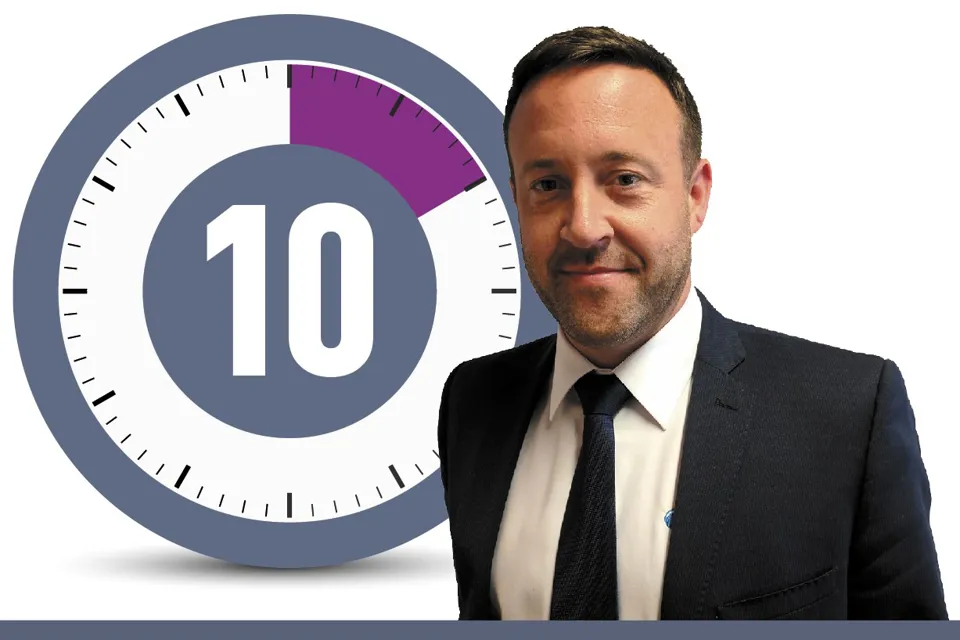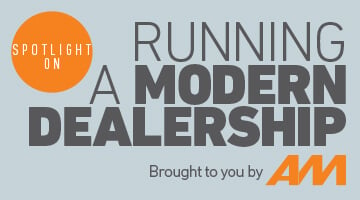Indicata seems to have grown very quickly since its launch. How big is the customer base you now serve?
Indicata is live in 13 European countries. We launched in September 2017 with a series of pilot schemes that sought feedback on exactly what retailers were looking for. We had already been analysing data for two years prior to that. At the end of the process, we looked at the data and matched what we had found to a series of KPIs. We were able to deliver that data via a series of dealer dashboards, which could be tailored to an individual business’s requirements. Two years on, and the system is being used in more than 2,500 sites of various sizes – one could be a manufacturer, such as Seat or Škoda, and another could be a small
independent retailer.
I understand that you have been able to achieve a degree of success through manufacturer partnerships, as well as with car retail operations?
We’ve sold this system into various manufacturers. Seat operates it, as does Škoda and Nissan. We’ve also just signed up with Porsche. It has become part of the efforts of these manufacturers to try to improve used car sales performance within their networks. Our manufacturer partners get the full market picture. You could have a retailer in the north west who is trying to retail 150 vehicles, but 50 of those might be non-franchise that aren’t performing well. The Indicata system gives the manufacturer the opportunity to say ‘why not invest in more of our used stock?’. Leasing companies and fleet companies can also use Indicata. If they have certain vehicles ‘on risk’, they have the ability to see there is currently a shortage of, say, Audi A1s on the market and take the decision to get those remarketed early to achieve a better price.
Is there a difference between what Indicata provides to its UK customers and those based on the continent?
No, not at all. Our holding company’s headquarters is in Denmark and our UK base is in Macclesfield, but, essentially, the product is the same. Overseas, we have different clients to those in the UK. We also work with Volvo in 13 countries and Kia in 10 countries and they both get this full market view. It could be argued that the system is more effective to manufacturers on the continent. There, they have the ability to put used cars into the market in certain geographic regions where they can see there is a clear market for them without worrying out the left- or right- hand drive issue that would arise from shifting stock to different markets outside the UK.
What sort of data sample is fed into the market insight element of the Indicata platform?
We analyse eight million used vehicles across Europe every year. They may be offered for sale by a business, drawn from online classifieds or subject to remarketing by a manufacturer, but that’s eight million vehicles that we are able to offer insight on. Our systems look at used vehicles advertised across various platforms. Regardless of where that data is, the system pulls in the vehicles’ age profile, make, model and trim and completes all that information before dragging it into a kind of data ‘washing machine’. The next day, we are able to go back and accurately view what might have changed. The insight gained might be that where there were three photos on the advert for the car, there are now 25. There is also likely to be a price change on certain vehicles. The system is almost working as another employee for the business, constantly analysing the market.
How essential is the real-time stock and wider market view that the business is able to provide?
We know that smartphones have changed everything – everyone has become an expert. Customers have changed and their route to buying a vehicle now starts online. They may only visit the dealership to collect their car or get a part-exchange valuation. Indicata feeds into that new retail environment by providing information that relates to what is happening in the market at a given moment in time. We have the ability to track the dealers’ stock as soon as they advertise it and how it compares to other stock in the market. We are able to deliver an immediate insight into what similar stock there is advertised out there, its age and time on the market, its pricing and any pricing movements, and an insight into exactly how they have been advertised in terms of the images and descriptions used. We can also bring up a register of recently sold vehicles of a similar specification to give an idea of an anticipated time to turn. It’s the kind of insight that should be central to a retailer’s consideration of whether its pricing is on point or whether, for example, they should consider retailing that part-exchange they just took in.
Do you find most retailers use Indicata exclusively, or do they use it alongside other valuation and stocking and pricing insight tools and platforms?
Carbase was one of our very early sign-ups and their view from day one was the more market data they had, the better they would be able buy and manage their stock. I think the success of the business bears that approach out. I think Indicata is a unique proposition and it’s not always used as an add-on, I have seen it replace key competitors. Cazana, for example, is another valuations tool, but I think, from our perspective, that’s more of a valuation appraisal tool rather than a system that offers inventory management in the way that Indicata does. Also, it’s easy to forget that for larger clients, such as Carbase, we can provide used cars, a remarketing channel and the logistics to move stock around through our parent company, Autorola. Then Indicata is there to ensure that the business achieves the best return on investment it can. The two businesses can work hand in hand. Another key difference between us and some of our competitors is that we are completely independent. We are not in the business of selling advertising or classified airspace and we are not trying to promote a certain car brand or model into the market. All we are doing is showing a whole market view of what is happening. There are other businesses providing market insight, but it tends to be related more closely to their management information.
How bespoke can you make the Indicata service?
Depending on the make-up of the business, we are able to configure certain screens, prioritise different KPIs. We can tailor the system to what is required or the stocking policy of a certain retail group. For example, we can factor in a £1,000 margin to make it clear what they should be buying a car for or when they should consider a disposal. We can also build APIs. If someone is wanting to do block valuations, we can do that. We can also plug into a dealer website in order to offer a part-exchange valuation tool.
By looking at the market as you do, what do you see as the key problems with car retailers’ online marketing of used cars?
A big area that so many car dealers seem to continuously overlook is the number of photos they place with each advert. Everyone now knows that if you have not got thumbnails and photos, then customers will just move on to the next advert. There is so much competition out there that it just seems like such an obvious point to emphasise. You are throwing away your marketing money if you don’t have those images in place. All a customer sees is an advert without images and assumes the worst – probably that it’s in the prep shop having been in an accident or something. It’s all about building transparency and confidence for the customer. Dealers are now reaching a point where they may put service documents, or MOT history if the vehicle is over three years old, online as part of their advert. It all helps the consumer make that decision. Another thing we see is people being too greedy in the first few days that they have a vehicle on sale. Car sales result when retailers follow the market. A £50 or £100 price difference is the difference between engaging a customer and making the sale or allowing them to walk away.
The market must be looking quite good for businesses, such as Indicata, that can support dealers’ used car sales amid falling sales of new product?
It is a busy time, that’s for sure, but we’re quite content with the number of clients we are currently serving. I think most dealers have had to switch their focus towards used cars in recent months. The realisation has been that you really need to be as close as you can be to the market in order to achieve a viable margin. You need to be on the ball – with all the market insight you can possibly view – or you run the risk of catching a serious cold.













Login to comment
Comments
No comments have been made yet.